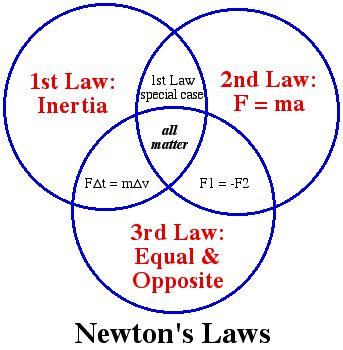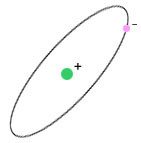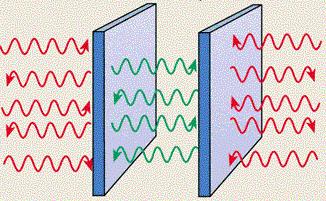
Reprinted from Meridian Magazine (22 Mar 2006).
©2006 by John P. Pratt. All rights Reserved.
| 1. The Light of Christ |
| 2. The Laws of Physics |
| 2.1 Luminiferous Ether |
| 2.2 Zero-Point Energy |
| 2.3 ZPE: the Basis of Physical Law? |
| 2.4 ZPE Experiments |
| 3. Following the Light |
| 3.1 Deadly Distractions |
| 4. Conclusion |
| Notes |
The sea of energy known in quantum physics sounds a lot like the Light of Christ, the very light we should follow.
When you watched the Star Wars movies, did you have the deep inner feeling that "the Force" is real? Are squirrels in tune with some such "force" when they store more nuts for a coming winter that they sense will be especially long? Have you had premonitions about the future that have come true? Have some of them prevented problems, or perhaps caused you to take action that saved your life? Have you ever thought that your survival, like the squirrels, might depend on your ability to listen and heed what your inner feelings tell you? When the next tornado, tsunami, earthquake or terrorist attack strikes, will you be able to tell afterwards how you had a "feeling" not to go into that store which was destroyed? If "the Force" is real, what does science know about it? What does religion know about it?
 |
Then quantum mechanics came along and predicted that all space is filled with immense energy. But scientists reasoned that because the energy was so huge, permeating all space, that its effects could never be measured. It was decided that it could be ignored and again treated as if it didn't exist by "renormalizing" it out of the equations. Now several experiments are showing that indeed not only can the effects be seen, but this sea of energy may be responsible for many of the principal laws of physics, such as Newton's laws of motion. It looks like the paths of science and religion are about to meet again because this vast "zero-point energy" appears very similar to what the Lord calls the "Light of Christ." And it looks like these discoveries might have real application in our lives, as we learn to follow the light.
One of the first hints in modern revelation of the relationship of truth, light, and spirit was given in
a priesthood revelation. The Lord said:
For the word of the Lord is truth, and whatsoever is truth is light, and whatsoever
is light is Spirit, even the Spirit of Jesus Christ.
And the Spirit giveth light to every man that cometh into the world; and the Spirit
enlighteneth every man through the world, that hearkeneth to the voice of the
Spirit....
And whoso receiveth not my voice is not acquainted with my voice, and is not of me. (D&C 84:45-46, 52)In a revelation known as "The Olive Leaf," the Lord Jesus Christ revealed to the latter-day Prophet Joseph Smith one of the great secrets of the universe, one which would be particularly difficult for scientists to discover. He explained:
He that ascended up on high, as also he descended below all things, in that he
comprehended all things, that he might be in all and through all things, the light of
truth;
Which truth shineth. This is the light of Christ. As also he is in the sun, and the
light of the sun, and the power thereof by which it was made.
As also he is in the moon, and is the light of the moon, and the power thereof by
which it was made;
As also the light of the stars, and the power thereof by which they were made;
And the earth also, and the power thereof, even the earth upon which you stand.
And the light which shineth, which giveth you light, is through him who
enlighteneth your eyes, which is the same light that quickeneth your
understandings;
Which light proceedeth forth from the presence of God to fill the immensity of
space—
The light which is in all things, which giveth life to all things, which is the law by which all things are governed, even the power of God who sitteth upon his throne, who is in the bosom of eternity, who is in the midst of all things. (D&C 88:6-13)
 |
By stating it several times in these few verses, the Lord emphasizes that this "light" is in all things and fills all of space. It is omnipresent. It is not a dead substance, but it allows the Creator be in touch with all things by literally being "in and through" them. He can truly know how we feel and what we think because his light and life fills our entire being.
Then the final verse provides more real meat for the physicist. We are told that this Light of Christ is also "the law by which all things are governed." What does that mean? Let us turn to what science has discovered about the laws which govern all things, to see if these two perspectives have anything in common.
 |
But where did these laws come from? We know how the laws work, but what do we know about why they work? It has long been a tenet of science that it only deals with finding laws that describe how things work so that we can have a better world by applying them in inventions and technology. Science has no way to discover the ultimate cause behind the laws. It makes little difference to how your cell phone works to know whether the governing laws were written by a Creator, or whether they are self-existent truths. We mostly just want our high-tech devices to work, and the low-tech varieties also.
Thus, science has been content to adopt the equations that came from some scientist's mind as explaining things. Sir Isaac Newton produced some of the best known laws of all time, including his three laws of motion, and law of gravity. Maxwell later wrote the equations of electricity and magnetism, and Schroedinger wrote an equation for quantum wave mechanics. It is rarely asked why these equations work, we are just glad that someone discovered that they do indeed work.
When a scientist does ask "why" an equation works, the only answer allowed in science is to explain it with an even more fundamental law. For example, Johannes Kepler produced three laws which describe the motion of planets around the sun. He gave no reason why they should work, but only claimed that they do. Then Sir Isaac Newton came up with his laws of motion and gravity, and was able to derive all of Kepler's laws from them. Thus, Newton's appear to be more fundamental, and Kepler's are now an exercise for the student.
Before continuing the science, let's look at how nineteenth century science was interpreted by some LDS scholars, who compared the light of Christ to the ether:
"The Spirit of God which emanates from Deity may be likened to electricity, or the universal ether, as explained in our manual, which fills the earth and the air, and is everywhere present. It is the power of God, the influence that he exerts throughout all his works by which he can effect his purposes and execute his will, in consonance with the laws of free agency which he has conferred upon man. By means of this Spirit every man is enlightened, the wicked as well as the good, the intelligent and the ignorant, the high and the low, each in accordance with his capacity to receive the light." — Joseph Fielding Smith[1]
". . . from the presence of these Divine Beings proceeds an essence or substance (perhaps like unto ether) variously called 'spirit,' 'light,' 'light of truth,' 'light of Christ,' corresponding somewhat to what other teachers regard as 'vital force' or 'energy' which permeates all nature and constitutes the immanence of God in the universe; through which the purposes of the Divine Intelligence are impressed upon other minds and also upon matter, and hence the orderly creations and their maintenance—the cosmos." — B. H. Roberts[2]
So at that time, it looked like "light" as understood by science and religion had something in common. Now let's get back to science, to see how its story changed. One of those minor details yet to be determined at the end of the nineteenth century concerned just what was the precise speed of the earth moving through the ether. After all, the earth is believed to orbit the sun, the sun is moving relative to the nearby stars, and then our whole galaxy is rotating, so the earth's "absolute speed" must be fairly large. Then in 1887 the famous Michelson-Morley experiment failed to measure any speed at all relative to the ether.[3]
The young Albert Einstein took that result and used it to rewrite much of physics. He proposed as one of his two fundamental postulates that the speed of light is constant, independent of the motion of either the emitter or observer. He declared that no experiment could be done to detect the motion through the ether because of that property of light. Then the big switch came, so watch the magician's hands closely. Because science only studies the observable, and because even in theory no experiment could detect the ether, then as far as science is concerned the ether does not exist. Poof, the ether has vanished. The vocabulary was amended, and it is now said that light travels through a vacuum.
Light was then shown to have bullet-like properties, and Einstein received the Nobel Prize for explaining the "photoelectric effect." For a while, light seemed to behave both as a particle ("photon") and also as a wave. Later it was shown that all particles, such as electrons, also have wave-like properties. In the minds of most physicists, the apparently wave-particle duality of light was resolved on the side of the photon, with all of the wave properties being explained by the amazing theory of quantum electrodynamics.[4]
When the equations which describe quantum mechanics became known, there was a huge term in them which annoyed scientists. It represented a background energy, which is present in and through all things. It was so large as to overpower everything else in the visible universe. Richard Feynman, Nobel Laureate in physics, estimated that the energy in one cubic meter of space is enough to boil all of the oceans on earth.[5] That is so huge that it was reasoned that it could never be detected because it was omnipresent. As a comparison, we live at the bottom of a deep sea of air, which pushes in on our bodies with tons of force.[6] Why are we not crushed by it? Because there is also an equally enormous pressure in our bodies pushing back out, so the effects cancel. When we measure the pressure in an automobile tire, we are actually just measuring the difference in the pressure inside, compared to what is outside. Now, we can live just fine ignoring the background air pressure until we decide to fly to the moon, where we would explode without a pressurized space suit. In a similar fashion, scientists "renormalized" the equations of quantum mechanics by subtracting out this energy, and then usually ignored it.
There are now a minority of physicists who believe that there may indeed be some observable effects of this background energy. It is an energy inherit in space itself and may even represent a huge untapped source of energy.[7] Because it exists and keeps atoms moving even at the coldest possible temperature of zero degrees, it has become dubbed the "zero-point energy" or simply ZPE. There is an excellent introduction to ZPE on the CalPhysics website.[8]
 |
Much of Newtonian physics is based on a property of matter called inertia, which is its mysterious resistance to a change in motion. What is the source of inertia? One recent paper proposes that it might be the resistance of objects to motion through the ZPE, and actually derives Newton's equations from ZPE considerations.[9] If such a proposal holds up, then ZPE is not only observable, but is has been observable all along as part of the motion of all matter.
 |
Many excellent papers proposing that ZPE might explain a wide range of physical laws have been reprinted on the internet from scientific journals.[11] Time will tell how far-reaching the implications of ZPE really are.
 |
There is a wonderful book out summarizing a multitude of rigorously done scientific experiments that may relate to the ZPE. It is entitled The Field written by Lynne McTaggart.[13] She is an investigative journalist who began to wonder if scientific experiments are being done to explain miraculous healings. She discovered an entire physics subculture investigating a wide variety of phenomena, usually classed as "paranormal" or "psychic."
Why did I just switch from talking about zero-point energy to recommend a book reporting the results on psychic phenomena? It is because some physicists have realized that very solid scientific studies are being done indicating a high probability that such phenomena are real, and then they are left to explain the processes at work. The real problem for the physicist is that the experiments indicate that people can influence each other at a distance, and can sometimes know what is happening at great distances and even in the past and future. It is as if all things are connected by some sort of web of knowledge that transcends space and time. If events cause some sort of ripple in the ZPE, perhaps they can leave some sort of track that can be discerned.
 |
With that, I must add that the book is recommended only as documenting many excellent scientific experiments which are being done. Not surprisingly, it suffers from a very poor understanding of the spirit world. The author and most physicists know nothing of the spirit world at all, or even the human spirit, much less God, angels, demons, ghosts, etc. They have merely proposed the first step, which is this great sea of zero-point energy. Thus, the book tends to explain all psychic phenomena with the ZPE, much as modern medicine now explains most disease as genetic, after having believed most was viral, after having believed most was bacterial. But if you can ignore the sweeping claims that ZPE explains all, you may enjoy interpreting the results of the experiments for yourself.
And if your eye be single to my glory, your whole bodies shall be filled with light, and there shall be no darkness in you; and that body which is filled with light comprehendeth all things. — D&C 88:67
Is that promise literally true? And could it apply to this life, or only to the resurrection?
The Lord gave the parable of the Wheat and the Tares, about letting the righteous and the wicked grow mature together until the end of the world (Mat. 13:24-30, D&C 86). At that time, the wheat (the righteous) will be gathered and the tares (weeds which resemble wheat, the wicked) will be burned. How will this be accomplished? Could it be that the whole idea of the righteous being spiritually mature means that they will have learned to follow the light within which will lead them to safety? Could it be that those who do not follow the Light of Christ, which is given to everyone ever born on this earth, are those who will perish? It has been prophesied that:
The time will come when no man nor woman will be able to endure on borrowed light. Each will have to be guided by the light within himself. If you do not have it, how can you stand? — Heber C. Kimball [14]
If we follow the light and hearken to the voice of the Spirit, we will be led back to God (D&C 84:47). We can also be led to make many more right decisions and to be much more aware of others and how best to serve their needs. We can become powerful spiritual beings as children of our Heavenly Father. We can become aware of danger, and know how to protect our families.